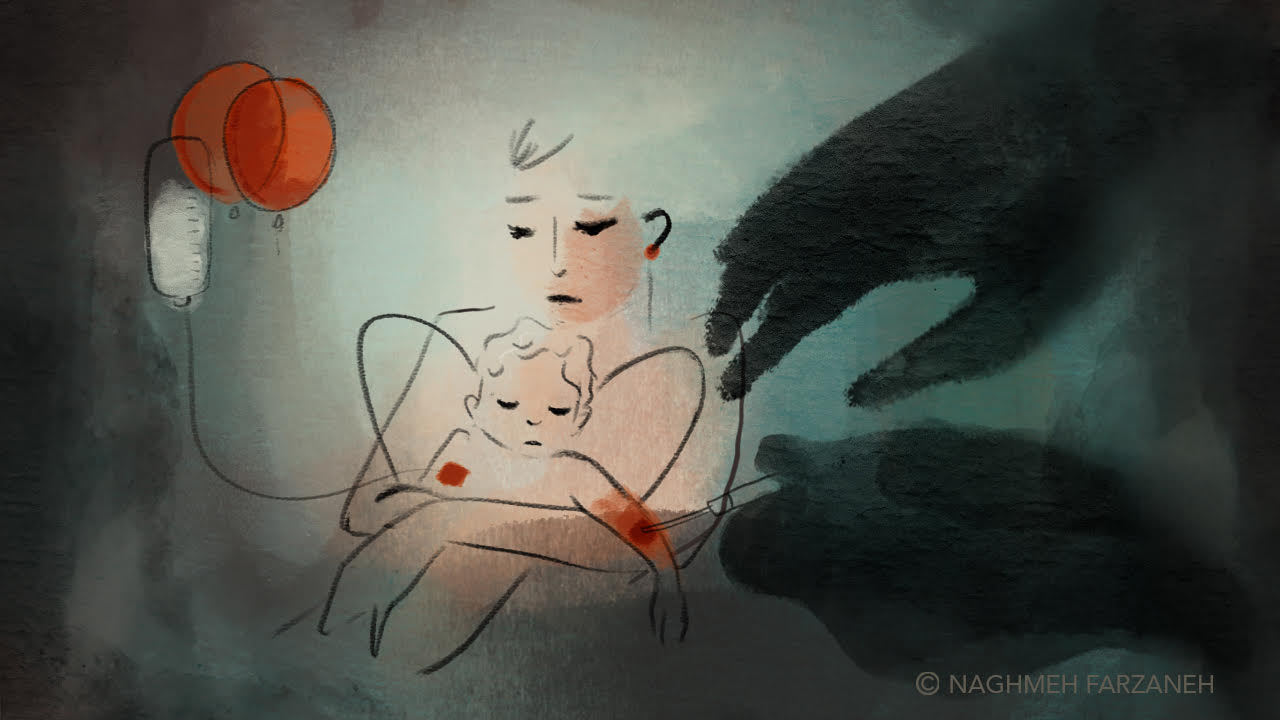 "The freedom animators have in composing and creating each scene and moment from scratch allows us to express very abstract feelings visually," says DePaul professor Naghmeh Farzaneh, who worked as animation art director on the Emmy-nominated film "In the Dark of the Valley." (Image courtesy of Naghmeh Farzaneh)
"The freedom animators have in composing and creating each scene and moment from scratch allows us to express very abstract feelings visually," says DePaul professor Naghmeh Farzaneh, who worked as animation art director on the Emmy-nominated film "In the Dark of the Valley." (Image courtesy of Naghmeh Farzaneh)
It’s not a typical morning for animator
Naghmeh Farzaneh to wake up and find a project she’s worked on earned an Emmy Award nomination, but that’s what happened last week. The assistant professor in the School of Cinematic Arts teaches visual concept development and character design in animation. Farzaneh served as animation art director for “In the Dark of the Valley,” which earned a nod for Outstanding Social Issue Documentary. In this Q&A, she tells us more about the film.
Tell us a bit about this film and why you decided to work on it.
“In the Dark of the Valley” is the story of a Southern California mother, Melissa Bumstead. She discovers the Santa Susana Field Lab, located only seven miles from her home, is the site of one of the largest nuclear accidents in U.S. history. The site was concealed from the public eye for 20 years and never fully cleaned up, and Melissa grapples with the idea that the site may be responsible for exposing her daughter and community to cancer-causing radioactive waste.
Animation director Elyse Kelly invited me to join the team as animation art director and storyboard artist. I had previously worked on several projects with Elyse and loved the dynamic we had as a team. Also, I was moved by the story they were following and wanted to help in any way I could to tell it.
How do you believe animation elevates documentaries and other nonfiction TV and film?
Animation can be a very powerful tool for storytelling. The freedom animators have in composing and creating each scene and moment from scratch allows us to express very abstract feelings visually. For example, we portrayed the pressure and anxiety Melissa and her family went through when Grace was in the hospital for chemotherapy. These are internal and often hard-to-explain feelings no camera can capture.
Congrats on the Emmy nomination! How can we watch the film?
Thank you! The film is available to stream online on
NBC and Peacock. The Emmy Awards for the documentary category will be announced on Sept. 29.
Kristin Claes Mathews is assistant director of news and integrated content in University Marketing and Communications.